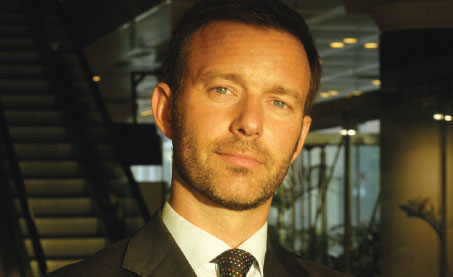
By Olivier Jankovec, Director General, ACI EUROPE
A year has passed since air traffic started its unprecedented decline in the wake of Lehman Brothers bank going bust. It has certainly not been a cheerful summer for European airports. Systemic capacity cuts by airlines combined with the bankruptcy of MyAir and SkyEurope have translated into traffic losses for the vast majority of airports. Only a happy few have experienced traffic gains, exclusively driven by low cost carriers. But even then, this has often been at the expense of other airports, with aircraft moving from depressed markets to others looking more promising.
The short term remains very unpredictable. While headlines increasingly report that economic recovery has actually started, there are now timid, yet tangible signals that air traffic has reached the bottom – and that it may even start to revive in the coming months. Under such circumstances, it is no surprise that airports are doing their utmost to incentivise traffic recovery. The update of the ACI EUROPE survey on 2009 charges at close to 200 airports gives an unequivocal confirmation. 94% of airports have either kept their 2009 charges stable, decreased them or reduced planned increase following consultations with airlines. This is quite remarkable, given our extremely challenging cost environment.
Closing part of a runway or a third of a terminal is not an option, and most of our staffing levels are driven by regulatory requirements. Worst, security and capital costs, which are beyond our control, have increased substantially. With the crisis, appetite for airport investment is no longer what it used to be. Indeed, airports have been reclassified as more volatile assets and several have suffered damaging credit rating downgrades.
As for security, we are faced with further cost escalation, not to mention operational stress. Discussions are now under way at EU level for the removal of existing restrictions to the carriage of LAGs (Liquids, Aerosols and Gels) based on the deployment of new screening technology. While ACI EUROPE fully supports the objective of improving the airport experience for the travelling public, we are adamant that this should only be done once efficient technology becomes available – which is not the case for the time being. Rushing now the removal of the restrictions through is the last thing we need.
For better news and brighter prospects, we still need to look some distance ahead. The Global Market Forecast just released by Airbus confirms that despite the crisis, long-term fundamentals for aviation remain very strong. Worldwide, air traffic will double in the next 15 years, with Europe growing at an average of 4.3% per annum. However, this is going to be quite a different market – indeed, Airbus considers that the long-term effects of the crisis will be on network evolution and market structure. For European airports, this will result in increased competition both externally and domestically within Europe.
A lot of future demand growth will come from fast developing nations, where the propensity to fly will grow tremendously along with consumer spending. Capturing these future fliers to and through European airports will be key to maximising development opportunities with far reaching benefits for their communities. Within Europe, the crisis is accelerating airline consolidation for Network Carriers, but also for Low Cost Carriers. This is likely to result in significant route network concentration around 5 airline groups, with the Low Cost segment becoming dominant for intra-European traffic. Overall, much fewer airlines to vie for across 500 European airports…
2025 may still seem very distant, but for airport planning purposes, it just means tomorrow. The opening of the new landmark Terminal at Barcelona airport last June and the confirmation by the German Courts in September that the expansion of Frankfurt airport is of public interest are very positive for the future of European aviation. But the on-going paralysis of the UK’s airport policy in relation to a third runway at London-Heathrow airport is a very worrying precedent. It reminds us that beyond our immediate difficulties, the absolute challenge for aviation remains getting its licence to operate and grow.
Under the leadership of ACI EUROPE, the European airport community has not only embraced the objective of carbon neutrality, but it is now working on making it a reality through Airport Carbon Accreditation. I am extremely proud that we were able to successfully launch this unique industry initiative at our Annual Congress last June in Manchester. This would not have been possible without the dedication and commitment of our team in Brussels and environmental experts of several airport members.







